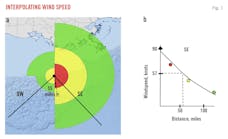BP PLC, operator of the deepwater Macondo well in the Gulf of Mexico, moved significantly closer to finishing a relief well when it lifted the Deepwater Horizon's failed blowout preventer onto a vessel late Sept. 4 after installing a different BOP on the well the previous day.
On Sept. 8, federal officials said drilling of a relief well to permanently seal the Macondo well from the bottom was expected to resume no sooner than Sept. 18 because scientists and engineers were doing diagnostics on the well and also fishing for drill pipe still inside the well.
An Apr. 20 blowout of the Macondo well caused an explosion and fire on Transocean Ltd.'s Deepwater Horizon semisubmersible, killing 11 people. The semi later sank, resulting in a massive oil spill. Response crews working to permanently kill the well have faced repeated technical hurdles and weather delays.
National Incident Commander and retired US Coast Guard Adm. Thad Allen said, "Where we are at now with the new BOP on the well is we basically have secured this well…. And, we have essentially eliminated the threat of discharge from the well at this point."
No oil and gas has leaked from the Macondo well on Mississippi Canyon Block 252 since the July 15 installation of a capping stack. Following cementing operations from the top of the well Aug. 5, pressure testing indicated an effective cement plug was in the casing.
Numerous steps were completed in early September so that crews could resume operations with Transocean's Development Drill III to finish the relief well to intercept the Macondo well and kill it from the bottom:
• The Discoverer Enterprise drillship removed a capping stack from the top of the Deepwater Horizon (DWH) BOP on Sept. 2 at 4:25 p.m. CDT.
• The Helix Q4000 multiservice vessel removed the DWH BOP from the Macondo well on Sept. 3 at 1:20 p.m.
• The DDII moved into place with its BOP, which was installed on Sept. 3 at 8:33 p.m.
• The DWH BOP was lifted to the surface on Sept. 4 at 8:53 p.m., and representatives of the US Department of Justice took custody of it as evidence in ongoing investigations.
No anomalies with well
On Sept. 8, Allen said the Q4000 was expected to start moving the DWH BOP closer to shore within 24 hr. The BOP will be transferred to other vessels and taken to shore for examination by federal authorities. The BOP has been separated from the lower marine riser package.
"At that point, [it] will be part of the evidence material that's been required by the joint investigative team, and this whole thing has been done under the supervision of the Department of Justice," Allen said. "There are law enforcement personnel onboard the vessel supervising each step."
Meanwhile, monitoring efforts continued at the Macondo well using remotely operated vessels.
"At the well itself we have continued to monitor the well, and there have been no anomalies associated with the well," Allen said.
Crews flushed fluids through the DDII BOP and replaced a perforated riser with a standard riser that creates "complete functionality of the riser pipe connect to the BOP…as if it were a functioning well itself with the BOP on top." A perforated riser was used to install the DDII BOP in case of any build in pressure, but that did not occur, Allen said.
The federal government is nearing a transition in which the National Incident Command finishes its role responding to the spill and hands the formal plugging and abandonment procedure over to the Bureau of Ocean Energy Management, Allen said.
Part of the plugging and abandonment process might be done before completion of the relief well, Allen said. Scientists studied the timing of when BP will put more cement into the well from the top using DDII.
That would be part of the plugging and abandonment process, Allen said. He expects a two-step process in which the DDI first puts cement into the top of the well and then the DDIII intercepts the Macondo well and injects cement into the bottom of the well.
More Oil & Gas Journal Current Issue Articles
More Oil & Gas Journal Archives Issue Articles
View Oil and Gas Articles on PennEnergy.com
